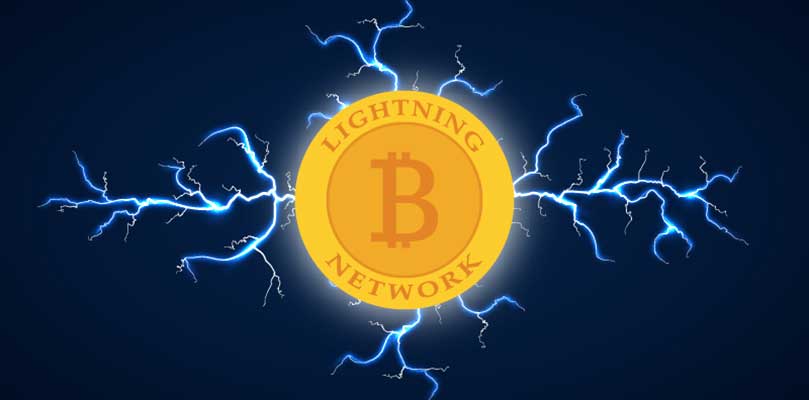Even though the price of bitcoin has been facing a bear market lately and the innovative Lightning Network is still facing some issues, the latter is growing bigger by the day. Bitcoin’s Lightning Network became bigger than ever before this month when its capacity finally crossed the 100 BTC mark (about $73,000). This can partly be attributed to the fact that bitcoin has managed to grow its popularity immensely – this has, in turn, lead to the hastening of the development progress of the off-chain payment protocol in the past few months.
The proposed second-layer scaling solution which was as low as 3 BTC at the beginning of the year has shown a great deal of promise not just for bitcoin enthusiasts but for the cryptocurrency community as a whole. While getting to the 100 BTC mark took a relatively short time (a little over half a year), getting to that point was certainly not an easy task. The Lightning Network first hit 50 BTC capacity back in July this year which seemingly pointed to the fact that the network is finally scaling the way it was intended.
More Nodes and Channels
Also, the total network capacity of 101.7 BTC is contributed to by 3,350 nodes and more than 12,000 channels. The number of nodes has increased by 11 percent in the past 30 days with the capacity and number of channels going up 4 and 7 percent respectively. Reports from the past month reveal that recent experimentation on the network account has influenced certain accounts to markedly increase their individual capacity to process payments.
As mentioned earlier, July was a pivotal escalation point for the network – overall capacity shot up 85 percent when compared to the month of June. There is still a lot more that has to be done in terms of the node count before the Lightning Network is at full speed but from the looks of it, everything is certainly headed in the right direction.
Dealing with Scaling Problems
All of the mentioned improvements are indications that many developers and crypto enthusiasts are committed to ensuring that the Lightning Network is a success – some of them include SatoshiLabs and Bitrefill who have been working diligently to improve the network. Unfortunately, we may have to cope with a few discrepancies which will hopefully be addressed as development progresses.
One of the most prominent of these issues is the user-friendliness of the network, or rather its non-user-friendly nature. To put this into perspective, many of the transactions on the network still fail and this affects the overall usability and outlook of the network. Hopefully, this should be fixed sooner than later if mainstream adoption is the ultimate goal. Till then, so far so good.
